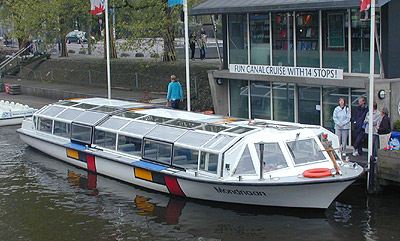
For a day and a half we rode the Canal Bus, which had 3 different routes, covering much of the city. There were 12 places where the boat docked and one could get off, see a nearby site and get back on another canal boat.
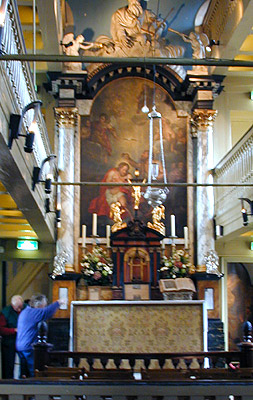
One of the places we saw was the Church in the Attic, a church built into the attics of three adjacent houses. This was done in the 1660's when worship in Catholic churches was forbidden.
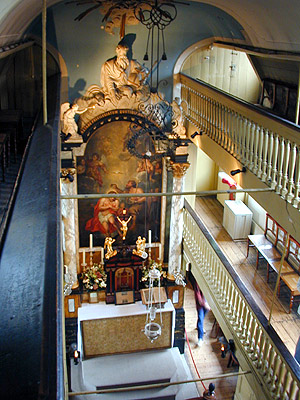
There were three levels where the worshippers could sit.
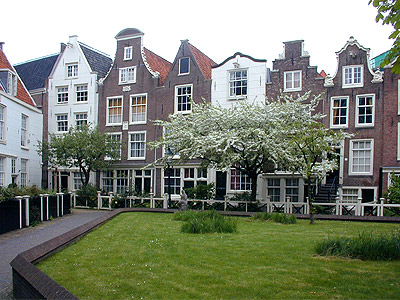
The Beguinhof was founded in the 14th century and provided homes for the Beguines, a lay sisterhood. It is a small haven in the middle of a bustling city.
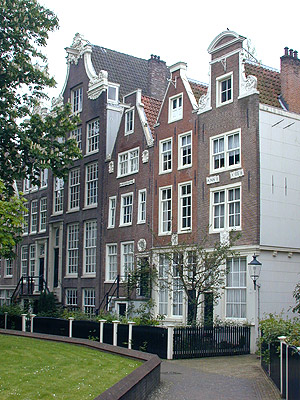
Each building has a small garden in the front.
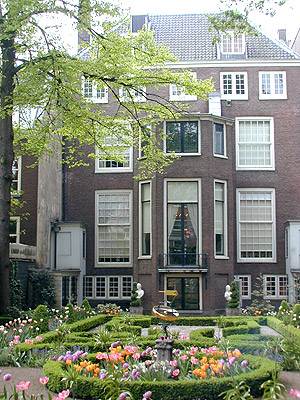
The Willet-Holthuysen Musem is in a 17th century canal house which has interesting furnishings. This view is from the rear garden.
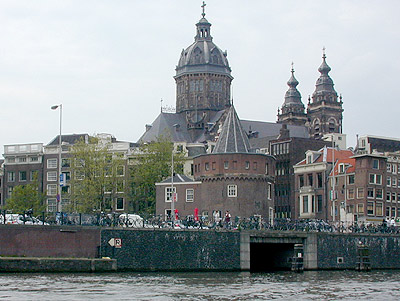
The small tower in the center foreground is called the Schrierstoren, or the Weeper's Tower. Popular legend says that it is so named because of the weeping of the women who came here to see their men off to sea.
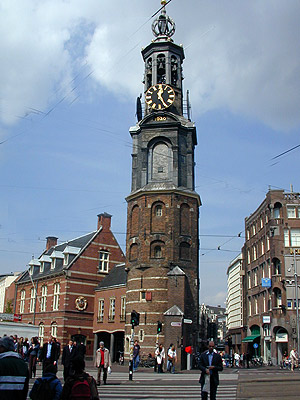
This is the Munttoren, the base of which formed part of the gate in Amsterdam's medieval city wall. It is called the Munttoren, or Mint Tower, since in 1673 during the French occupation of Amsterdam, it was used to house the city mint.
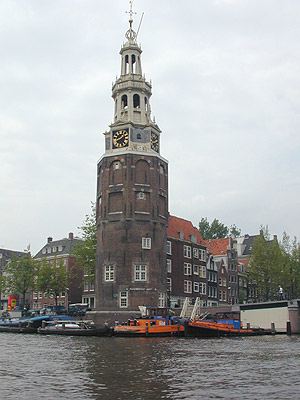
This is the Montelbaanstoren. The lower part was built in 1512 and formed part of Amsterdam's medieval fortifications.
See pictures of dinner with our relatives. .
